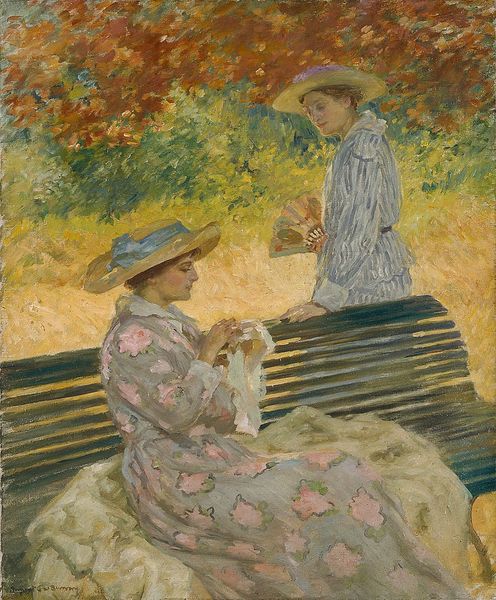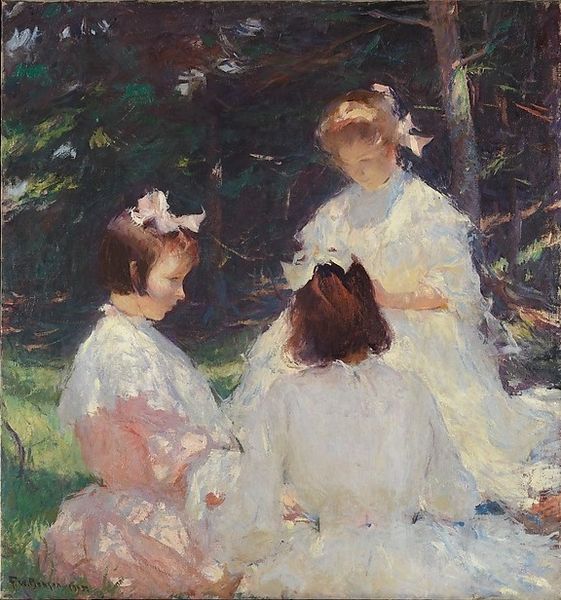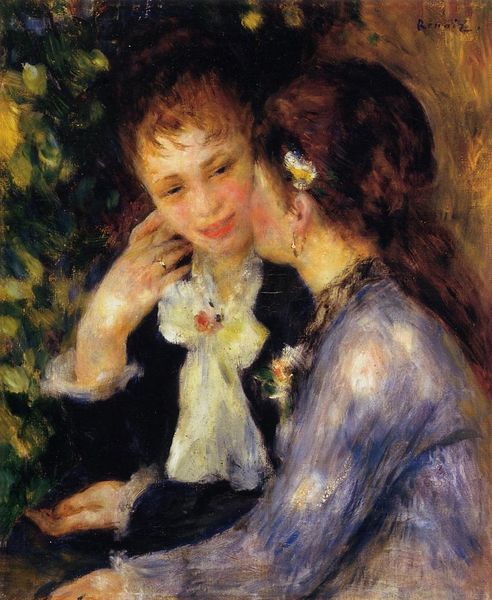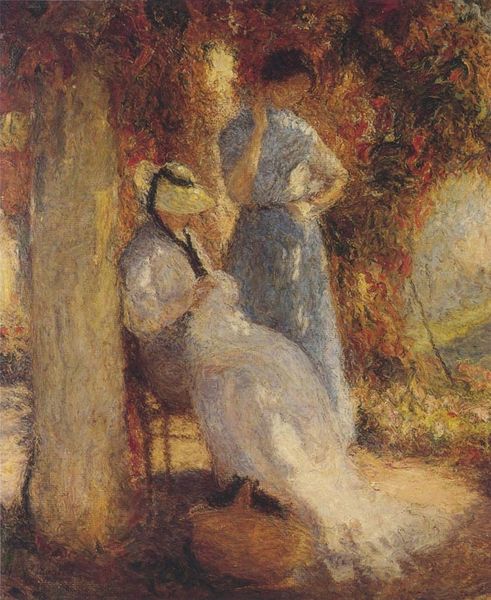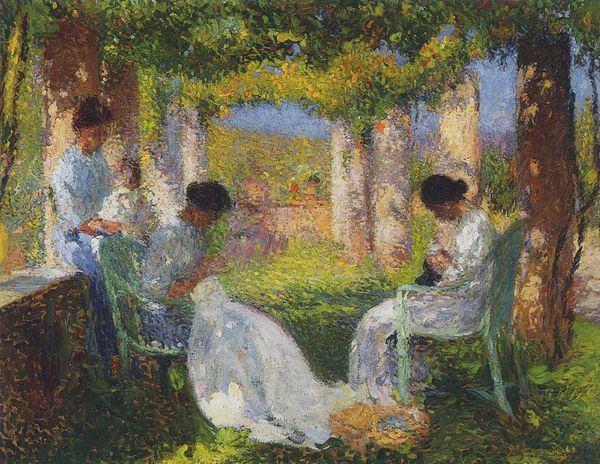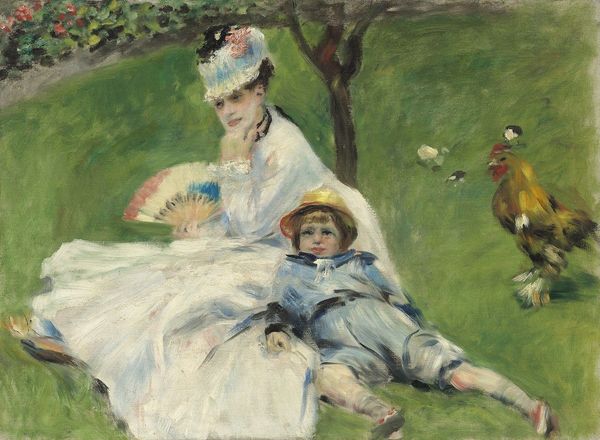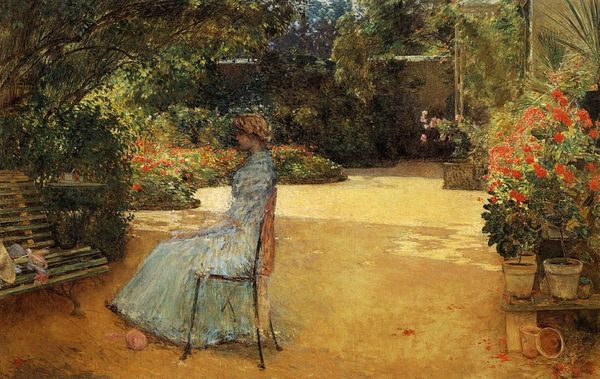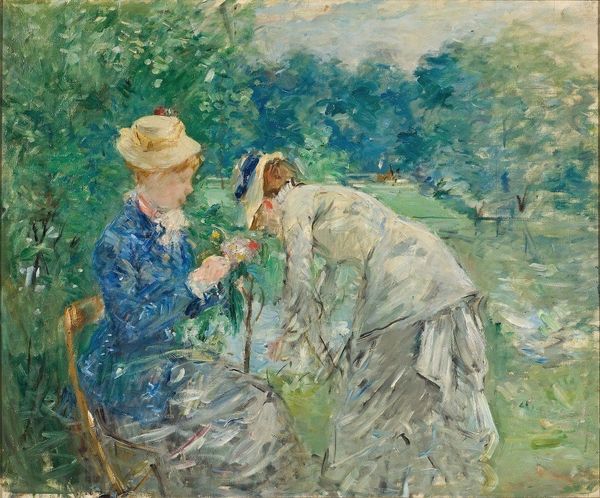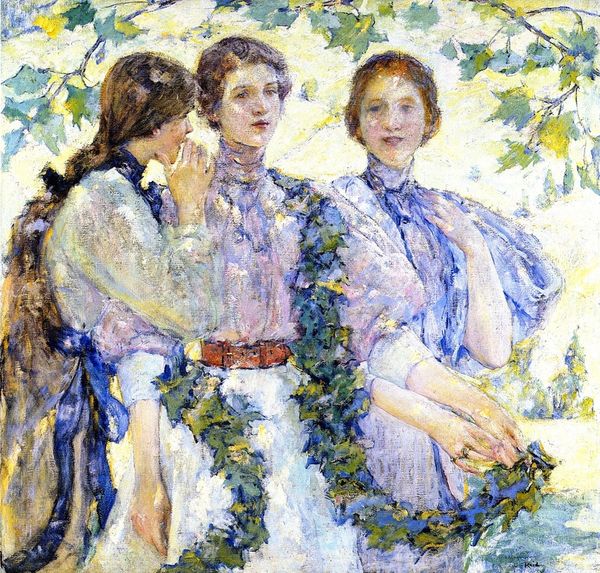
Dimensions: 67 x 58.5 cm
Copyright: Public domain
Curator: Looking at Victor Borisov-Musatov's "Two Ladies" from 1899, what immediately comes to mind is its delicate air, almost like a faded photograph. The hazy light and soft brushstrokes really lend a dreamlike quality, don't you think? Editor: It certainly has an atmosphere. I'm drawn to how much emphasis there is on the making of the painting itself. Look at the dresses; they're essentially piles of brushstrokes meant to mimic silk or linen. Where did Musatov get these materials, I wonder, and how available were they to ordinary folks at the time? The division of labor always makes me curious. Curator: It makes you think about access and privilege. I’m more caught up in the way he captures this fleeting moment. There's a subtle sense of longing, as if the women are reminiscing about something just out of reach. Is it merely a representation of leisure, or is it hinting at something more profound? Editor: I think it's the latter because leisure, especially at the turn of the century, was itself work for the upper classes. "Maintaining appearances," cultivating social relationships, showing off a new dress... Oil paint was becoming easier to manufacture, but the very act of painting these women was a project invested with labor. These were commodities that demanded attention to sustain. Curator: A demanding aesthetic indeed. The pastel palette he used really sets the tone. It reminds me of whispered secrets and shared confidences between them. Are they friends, sisters, or perhaps even representing different aspects of a single self? It almost reminds me of those old spiritualist photographs, trying to capture more than one plane of existence on film! Editor: That pastel quality makes it seem deceptively ephemeral. But let's be real: pigments don’t simply materialize; they are the end result of a process involving extracted materials and oftentimes backbreaking work. Curator: Maybe the painting invites us to remember that sometimes the greatest beauty is found in recognizing the effort behind the illusion. In the gossamer light, one can nearly touch them. Thank you for the conversation. Editor: Likewise! Next time I hope we get to talk about pigments and who's really mixing them. It might even affect the way we perceive art history itself!
Comments
No comments
Be the first to comment and join the conversation on the ultimate creative platform.


